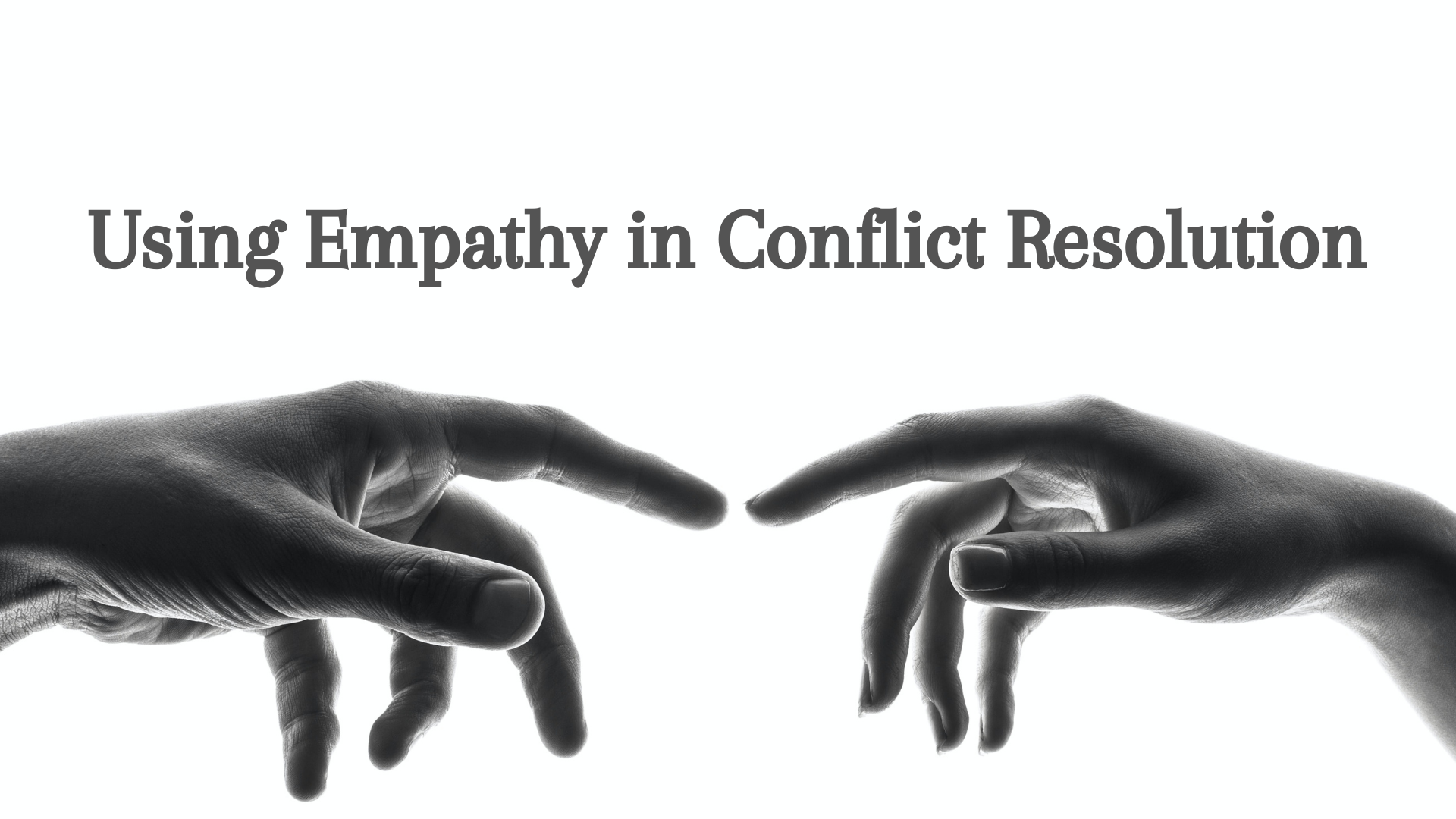How To Deal With the Machine - [Resistance Through the Lens of Vincent Van Gogh]
/The Story of Vincent Van Gogh, the Background of “Starry Night”, and what it means for us — because in a world where our hopes will never work, we need all the dents we can get.
Part One — The Purple Dots & The Machine
There is an illustration by theologian Elaine Heath that dissects how change in culture is responded to in organizations. In her case, she is focusing on the church and how, in light of a shifting landscape that needs to be adapted to, leaders respond in various ways. As the essence of the corporate identity grows and develops, as the organization discovers itself more and as the context of their existence evolves, there tend to be three responses.
In Heath’s example of the church, its cultural manifestations that have become normal over time tend to be gripped tightly as if they are absolutes. Even organizations face this dilemma as what worked with their identity fifty years ago might not be effective as the cultural landscape has evolved. There is one response, then, to stay where you are. In the face of descent that results from not growing and adapting, which Heath portrays with a sloping red line, we follow it to the bottom.
There is another response, categorized by a blue caterpillar. This response attempts to navigate the red line by working within the norm to help imagine a new future. They don’t embody change, but they embrace it. They stand in the current and help make a new future possible. Often, the blue caterpillars in Heath’s illustration are essential for the vitality of the third response and, as such, Theo Van Vogh might be best described as a blue caterpillar.
Third, though, are those who prophetically call the world forward. Often a lonely experience, they push the boundaries and move into uncharted territory. They call the current state of being into a new state of being. These are the purple dots — out on the fringe of the illustration, they are calling those on the red line into the next part of the story.
Taking a stand.
Pushing for change.
Confronting a wrong.
Propelling the world into its future.
If you find yourself in that state of being, you might be a purple dot; a prophetic life trying to show us all a new way forward on a landscape that is already forcing us forward whether we want it to or not.
However, the reality of being a purple dot, of resisting the way things are in hope for what they could be, will be difficult, ostracized, unheard, and refused by the norm. You take on the role of going where others have not. You speak the word that has been ignored. You embody a new path that no one is yet on. As a result, you find yourself confronting a world that does not want what you are trying to do and a world that will work very hard to make sure nothing changes.
You could say, taking this role is often like running up against a machine (Que any Rage Against the Machine song — particularly “Killing in the Name Of” — I wonder if Vincent Van Gogh had traveled in a time machine and gotten an early release of this work as a soundtrack for his life).
To challenge or oppose or defy what is normal and compel it in a better direction is an endeavor attempting to counter an obstacle that has been established to keep from moving. Human systems and constructs are set to make survival easier and more predictable. We don’t like change and so we develop scripts and norms and cultures and ways of life that will smooth out the existential journey. To change that would be a threat.
Yet sometimes these norms can become destructive — whether because they strayed from their original intention or they were designed to gather power at another’s expense or they were only helpful for a season until the landscape of life shifted. When we come to face these destructive norms, we must realize we are facing the conglomeration of time and energy structures that are firmly entrenched in a concrete ground.
No matter the noble intention, the structures are designed to resist you and, if they are powerful enough, they will leave you ostracized, outcast, and deterred to the point that you feel the machine is impossible to change.
You face a difficult decision, then, if you decide to resist and change the machine.
You may be convinced that the current setting is not okay, but you will be overwhelmed by the robust noise that reminds you again and again that this will never work.
So what do we do in light of such a formidable and impossible task?
What do we do in the face of the lonely and, seemingly, futile role of the purple dot?
How do we deal with the various machines that we desperately sense need to be confronted yet seem immovable?
Our most effective response to this reality might be best addressed through the powerful tragedy that is Vincent Van Gogh’s life.
Part two — The [Apparently Failed] Story of Vincent Van Gogh
Vincent Van Gogh grew up in the late 1800s in a small Dutch town called Zundert residing in the parsonage that sat in the center of the town square. His father was a pastor, as was custom in their family history — most relatives were either in ministry or in the art dealer trade — which brought with it certain expectations of the family’s ideals in society, culture, and class.
Vincent, being the firstborn child, was born into these expectations.
The town they grew up in was a remote farm town removed from the heights of civilization that his parents desired. Their parsonage, residing in the center of their village where most commerce and social activity occurred, put them in the center of the societal lens. Though not inhabiting the highest rungs of class, their leadership role and the embedded high profile of that role gave them access to privileged culture — something Vincent’s parents regarded as the most important priority for their well being. The children were encouraged to fit the mold of elites as much as possible, to pursue relationships and company only of those higher in status than them, and to look the part as much as possible. Vincent’s parents would proudly stroll through the town square right outside of their parsonage in Zundert with their children in their best dress, fitting all the ideals of society for everyone to see.
They wanted only the best for their family.
They only wanted to fit the civil expectations of the day.
Vincent, however, didn’t fit.
An Unaccepted Personality
Vincent often kept to himself — something that, to his parents, resembled mental instability and anti-social behavior, not elitism. He would rather traverse the creeks and wild farmland and forests than stroll through town. He would rather sit in the attic categorizing insects than be at school. And, from an early age, it was obvious that every fiber of his being rebelled against his parent’s controlling ideals. It was obvious that whatever their culture was after, he was moving in a completely different direction.
He drifted from schools — eventually being sent to boarding school after boarding school, constantly failing (even art classes), mostly because he estranged himself from the others and desired, more than anything, to be in the familiarity of his family in Zundert. The home that disapproved of young Vincent’s personality was the only place his personality felt comfortable to be.
After years of this same pattern — being sent off, failing school, returning home — he finally gave up his educational pursuit at the age of 16.
As a lack of education now ruled out the potential of a ministerial career, he now had only one option — to enter into the other family trade of art dealing.
Vincent’s First Art Profession
Vincent’s father was able to arrange an art trade vocation with Vincent’s famous and prolific uncle who ran the art dealing world in most of Europe — an exquisite opportunity. Being relatively anti-social, unmotivated, and reclusive made this trade pretty difficult and, just as in the other vast opportunities young Vincent continuously squelched, he failed this, as well.
What is interesting, however, is that Vincent’s failure was not because he didn’t know art or because he couldn’t sell it. Ultimately, Vincent would be confronted again and again by various bosses throughout Europe because he rebelled against the expectations of society, of class, and of behavior. He would refrain from selling poorly made commodity art to people when they asked for it (even arguing with them about their buying decisions), he would isolate himself from the public out of remorse for civilized society, and, more and more, get caught in his own romanticism and existentialism, becoming so estranged that his uncle fired him.
For Vincent, this meant not only a mark on his career, but it was also a mark against his ability to properly carry on his family name.
As a result, Vincent became determined as ever to win back his family’s trust, love, and approval — which left one final career option.
A Final Attempt At Ministry
After his failure at art dealing, Vincent came back to his first cultural malaise — religion. While living in cultural epicenters, Vincent began to explore the vast diversity of his inherited Christianity. Vincent grew especially fond of the monastics and the mystics and yearned to practice Christianity in their pattern — which attributed itself to his personality. While working odd jobs, Vincent embedded himself in the self-denial of the saints, making just enough money to carry out his vision of a monastic lifestyle. Eventually, he started working in churches, often for little or no money, as he was convinced that his only offering to society, as well as the best opportunity to win over his family’s support, was to be caught up in the idealism of leading the church to a better future.
He despised common Christianity and he imagined a better expression of the Christianity he witnessed in ages past.
Vincent Van Gogh, arguably one of the most famous artists in history, felt that the height of his purpose was to tutor children and preach terrible sermons. He wanted so badly to excel for the faith, but even more so for his family — to win their admiration after only being told and shamed by them that he was a failure for not fitting into their expectations. After ineffective attempts at small churches throughout England, he knew what he really needed to do — what his father would ultimately be, finally, proud of — go to seminary. If he could redeem his failed education by excelling in one of the most rigorous and demanding educational systems of his day, then he was sure to achieve his purpose of taking his culture in a new direction…and be celebrated by his family.
None of this happened.
But not because Vincent didn’t work hard. In detailed accounts of his daily schedule, his work ethic was unbelievable. The amount of time he spent studying, training, and working on his weaknesses in the academic world far surpass the ordinary work ethic not only of his time, but of modern expectations. He studied relentlessly. He had a tutor that oversaw every component of Vincent’s productivity. He would attend church services as if it was an addiction, somehow finding a way to get attend four or five churches every Sunday to learn from the best in his geographical setting.
And yet he still failed.
The nail to the picturesque ministerial acclamation that would fix all of his problems was pounded into the coffin when his grades were still insufficient and it was clear that he didn’t have what it took to receive the necessary credentials to become an official reverend. Since his family was unwilling to offer any further financial investment in his future and he was unable to secure any funding from anywhere else, his academic pursuits were over.
Vincent Van Gogh failed school, dropped out, was fired from selling art, and now finished the cycle by dropping out again.
Just One More Try
In his failure, he left the civilized world and went to a Flemish mining community called the Borinage to be a missionary — a low paying, self-sacrificing defacement to the high-class ideals his family desired for him. This clerical role was the bottom of the religious ladder. He was drawn to the suffering of economic exploitation the people faced in this area and committed himself to minimalism — as he thought the ministry should be.
He was so drawn to the plight of the poor and outsiders and disenfranchised classes that resulted from the Industrial Revolution that he gave all the money he made away, even the money his parents sent him to buy nicer clothes and housing after they were displeased with seeing his physical appearance.
Eventually, so flustered that his community was in such poor conditions, he left the house where a family was letting him stay and moved into an abandoned shack where he slept in a haystack while only eating the leftover bread from a bakery to the point that he looked like the worst of humankind — something his religious elders and family deplored, but something that he felt was the only right thing to do in the pursuit of becoming like & embodying the way of Christ. People would buy him housing and food and clothes, but he refused it all again and again and again.
The miners in the village became his new family. He brought them any food or coffee he could find. He helped them dig out leftover coal, even in sub-zero temperatures, and gave the best medical attention he could to children while their parents were down in the mines. He even used his last remaining shirt to tie around the bleeding limb of a child.
One day, his superiors visited the Borinage and, on seeing Vincent’s condition, determined that he was unacceptable for ministry.
Because of his continued steadfast passion, because of his determination to meet the needs of the people he loved and reimagine how the church should work in society, Vincent Van Gogh got fired as a failure. He couldn’t even be accepted in the lowest form of missionary work available to someone like him.
His ideals in art and his rebellion against common culture left him without work in the art world.
And his ideals for humanity and a better world left him without purpose in the cultural endeavor of the Church.
Vincent didn’t fit the mold and he was up against a machine in which he would never be accepted.
That’s When He Started Painting
In his failure and disappointment and hopelessness…he gave up his dream. He gave up trying to fight against the machine of his culture. He gave up trying to be so true to what he thought the church should be and changing it for the better. He gave up chasing the reality that seemed so clear his mind, but so foreign to the world around him.
And it was then, as a result of his failure, that he became an artist.
As a reject of society, he began wandering through Europe, financed by the only soul who believed in him, his brother Theo. He began by drawing, then threw himself into painting. He was uneducated and untrained. He was rejected by the proud names of the day. He fell out of love with the high society of France and never quite found a place among the new artists of the Industrialized world. Even his dreams of an artist community that could redefine a better version of art were crushed when his hopeful friend, Paul Gauguin vacated his hospitality.
In response, he retreated almost willingly to be stuffed away in an insane asylum where we would write letters, wander through the fields, and paint.
Here in his asylum room looking out his east facing window, he created what is now a masterpiece, but what was simply an image that defined Vincent Van Gogh’s journey, failure, and hopeless vision against the machine that rejected him.
It was as if his entire life culminated to this moment where he created a work that captured his world.
The painting, of course, is now one of the most recognized pieces of art in all of history.
Part three — Starry Night
At its creation, even Vincent didn’t think Starry Night was very good. He always sent his paintings to his patron and beloved younger brother, Theo, but this one he held back to save the postage cost because he considered this painting a failure.
Yet, it captured the very essence of Vincent’s story.
The painting is focused on light. It is a night painting, something Van Gogh was enamored with at this time, so he used colors to draw out the lights, especially the stars — of which there are eleven…a reference to Joseph in the book of Genesis at a moment where his eleven brothers sell him to slavery and fake his death. It is a story about someone who didn’t fit and was rejected.
The dominant colors of the painting are yellow and blue — colors that were often used in depictions of Christ — but he includes a Cypress tree — an image used as a metaphor for death.
He centers the painting on these vivid swirls that depict the cosmos, this presence that embodies the mystery of the Divine along with violently expressive strokes — an indicator that Van Gogh was yearning for something transcendent when he created this.
It is almost as if this painting captured his striving for the Divine yet the death he felt for being so different that he didn’t fit in and was considered a failure.
Because there is one more detail that makes this clear in a painting dominated by the expression of light and the Divine story.
In the middle of the painting is a village with various lights illuminating their structures, and yet, in the center of the village is a building whose lights are not on.
The church.
The one hope Vincent had to create a true human development in a society that, in his mind, was so off track — was dark.
Part four — The Machine and Its Vicious Power
Vincent Van Gogh found himself in the machine of the world. He sought to change it. He was driven by his passionate desire to be true to a better story.
And yet, the machine won.
Not long after creating this masterpiece, Vincent Van Gogh died.
There is speculation, of course, to his death, but in some of those letters he constantly sent, especially to his beloved brother Theo, it seems clear that Vincent embraced his death and it is likely that his life was taken by none other than himself.
A tremendous voice, an unprecedented artist, and a picture of a different trajectory for humanity’s possibility in a messed up society lost to that society. Vincent Van Gogh saw clearly that what was normal was actually insane, but the insane normal outcasted him as the insane one — the unsteady Vincent lost to the machine that could not hear him or, as Don McLean wrote:
Now I understand
What you tried to say to me
And how you suffered for your sanity
And how you tried to set them free
They would not listen, they did not know how
Perhaps they’ll listen now
In the end, the only expression left for Vincent about the church and civilization was that it was dark. What he yearned for, what he saw and hoped for, was dark. He was a failure, he was too different, he could not be understood, the world would not listen, and his dream would only ever be just that…a dream.
This is the life of a purple dot — of someone who finds themselves up against an insurmountable machine. In one of Van Gogh’s last journals, he wrote that he didn’t feel he had anything left to paint. One of the great artists of history felt there was no more reason to paint. What’s more, an artist who could sell a single canvas for millions of dollars today sold one painting during his lifetime. He fought, he tried, but every ounce of his being told him that the machine could not be overcome.
It is the fate of many who choose the path of resistance.
So in this reality, what are we to do?
First, in your perceived failure, know that you are in good hands.
If you find yourself fighting against something that seems impossible, you are in good company.
If you find yourself not fitting the mold, not achieving expectations, and holding onto an ideal that clashes with the world around you so much so that it doesn’t feel like it will ever happen, you are not alone.
If you are up against a machine that just won’t change and is so embedded in the people and structures around you that, if you choose not to play the game, you will fail…
…just know that it is a fight that has been fought time and time again.
To go up against a machine is to join the sages of history who have traversed this journey before you.
Second, know that you will probably lose.
Call it pessimism, but from Gandhi to Martin Luther King Jr., the fate of purple dots has been that they are gone before their vision is achieved. The common metaphor is that of the elephant who cannot be eaten all at once. Just like Van Gogh and so many others that sought to do the work of resistance, our desire to stop the machine will probably not be fully realized in your brief span of life. While this can stir us into disdain, apathy, or nihilism, it should still reserve hope. Because the only way to eat an elephant is one bite at a time. You shouldn’t give up simply because you realize that you will probably lose. Because in your effort, you might be assuring those who come after you that maybe you lost, but we won’t lose as we continue what you started.
You might not be able to take out the whole machine, but take heart.
Because you can put a dent in that machine.
Though Vincent never saw it happen, the thing that drove him into the ground, the failure that consumed his life…it did change.
The art world changed.
The Church’s essence shifted.
And his family, especially his beloved brother Theo, eventually saw the beauty of who their estranged Vincent really was.
Maybe you just need reminded that Vincent Van Gogh died poor and unpopular. His died with one sale, with one positive review by the art media, and, as rumor has it, only a handful of people at his funeral. He didn’t overcome the machine, but he dented it enough that what he started has continued to change the very landscape of the world.
So when you find yourself up against the machine and not fitting in and railing for change and chasing a different future while being crucified or forgotten or shoved to the side — being told “This will never work” — know that it might not work now, but another story is possible. That you might just be ahead of your time. That it might drive you to an insane asylum where all is lost.
But you just might give the world a dent.
And we need all the dents we can get.
May you, whenever you hear the dominant voices yelling, “This will never work,” be reminded of the wisdom of those who have gone before you.
That another story is possible.
That the machine can be overcome piece by piece by piece.
And that you get to be a part of it.











![Three Reasons We're Lonely - [And Three Responses For Being Less So]](https://images.squarespace-cdn.com/content/v1/5963d280893fc02db1b9a659/1651234022075-7WEKZ2LGDVCR7IM74KE2/Loneliness+3+update+%283%29.png)





























